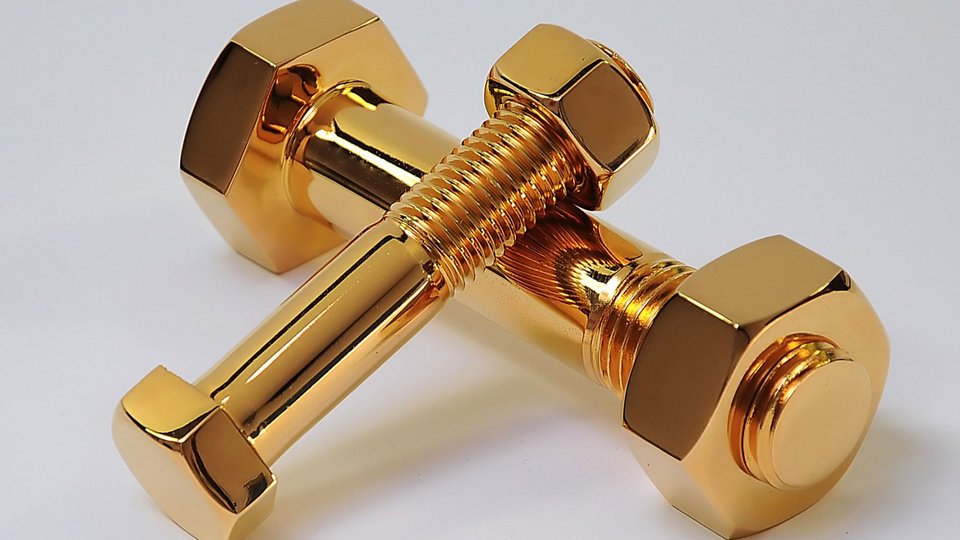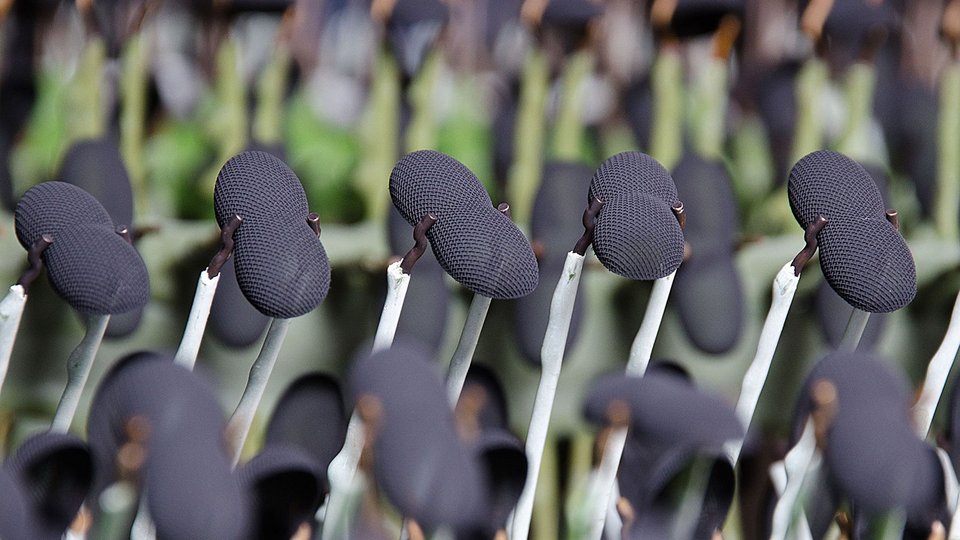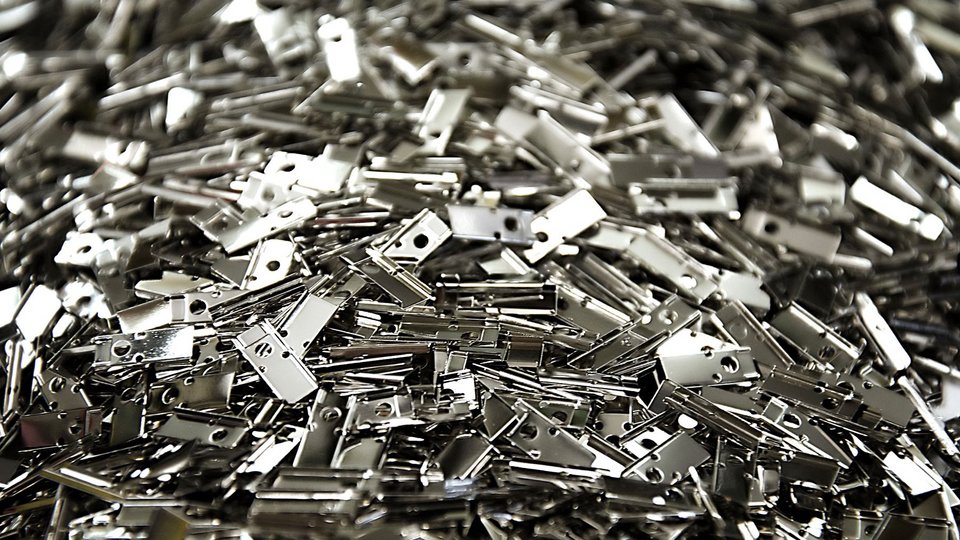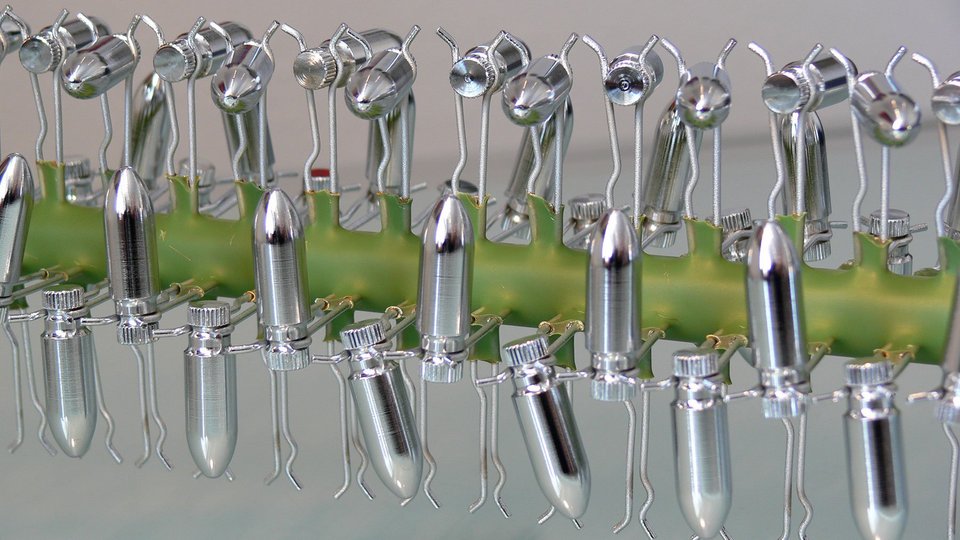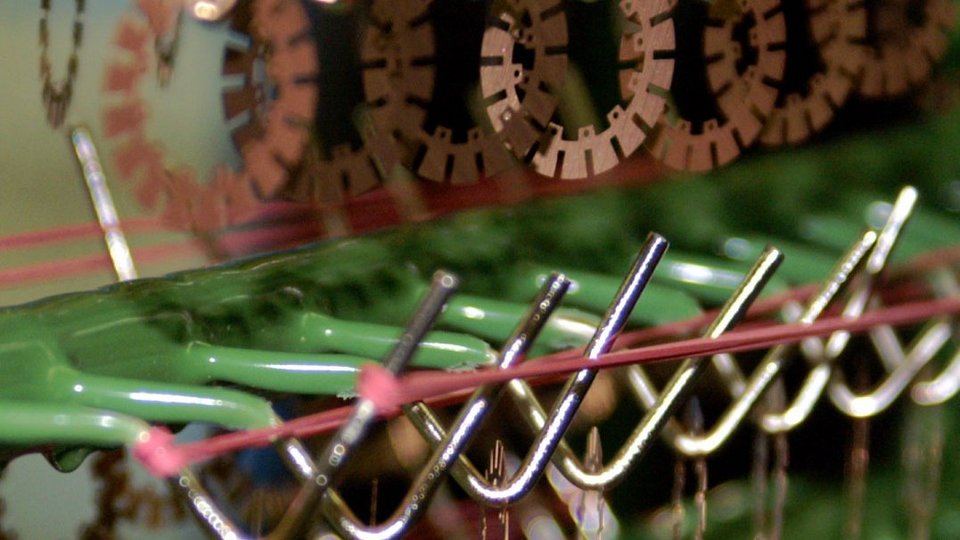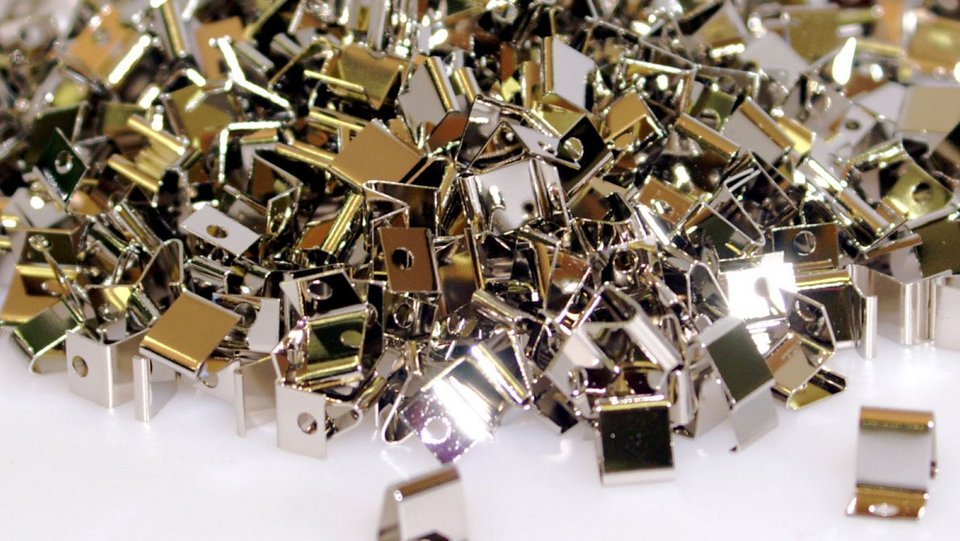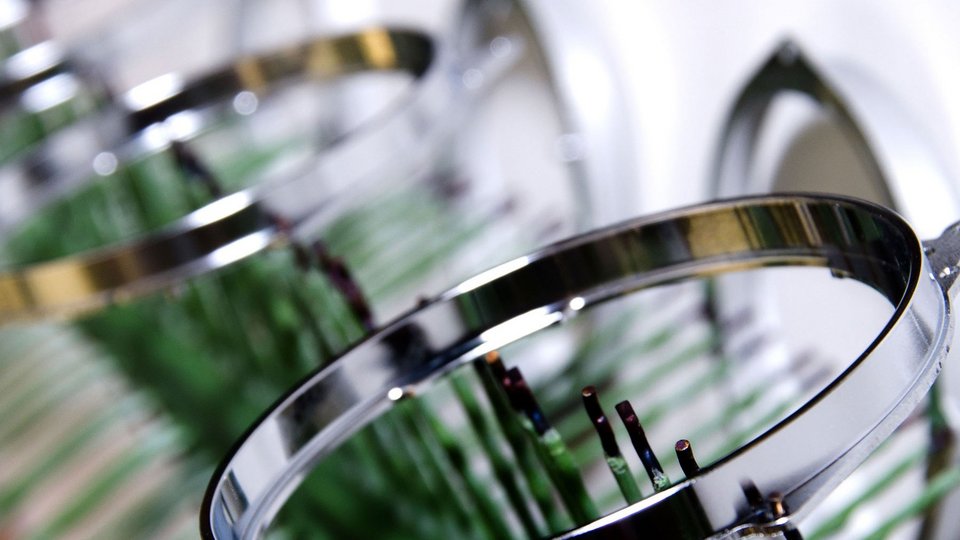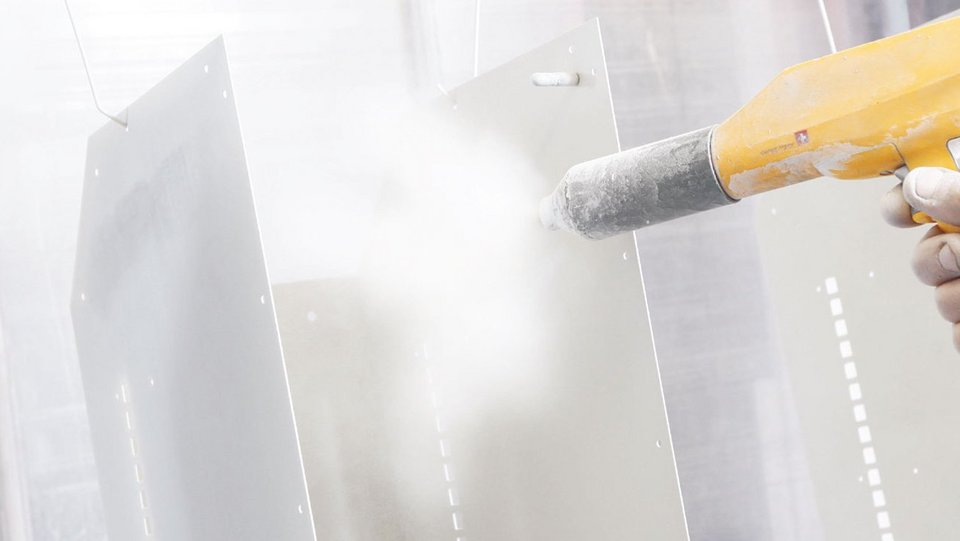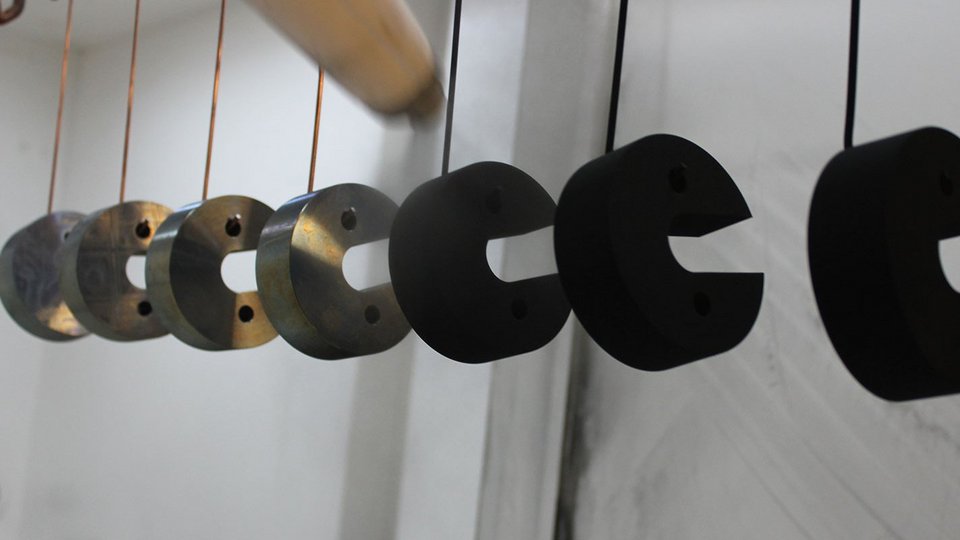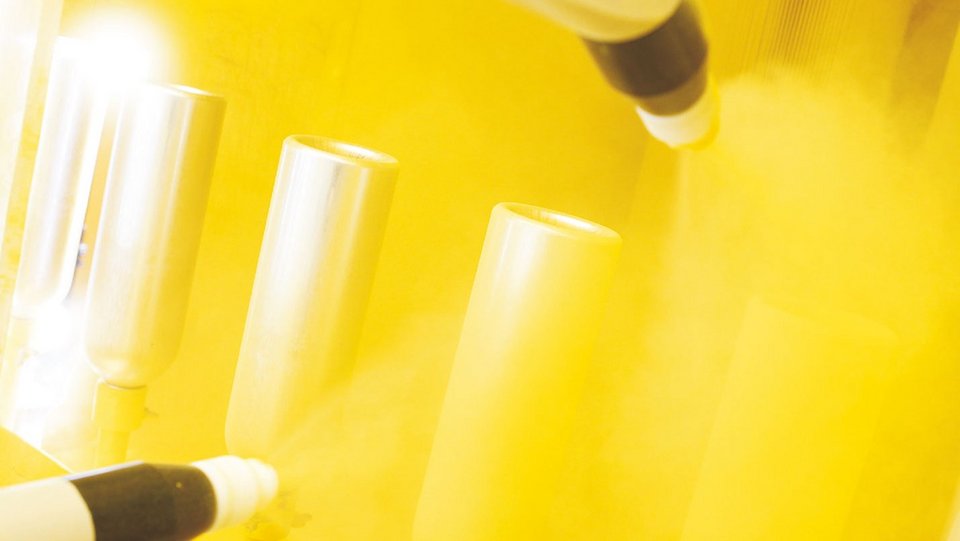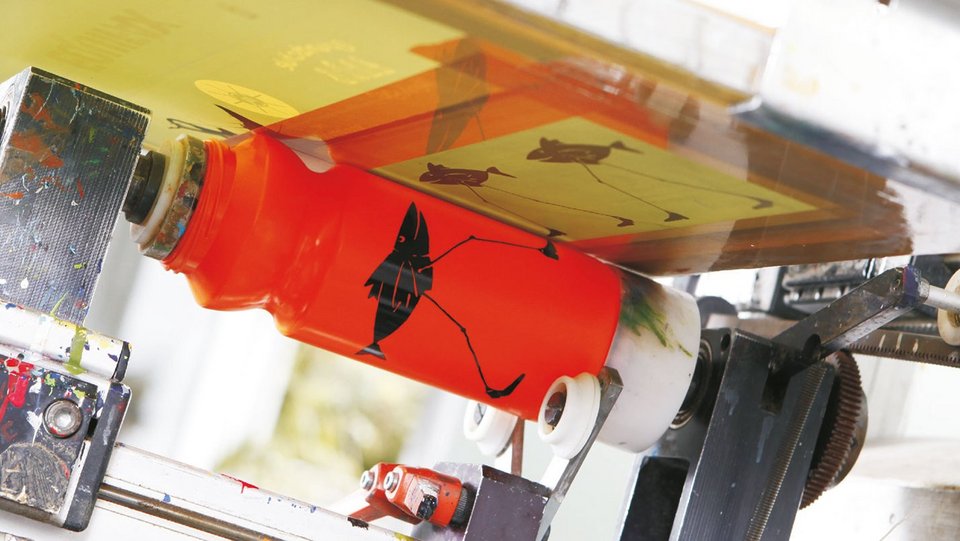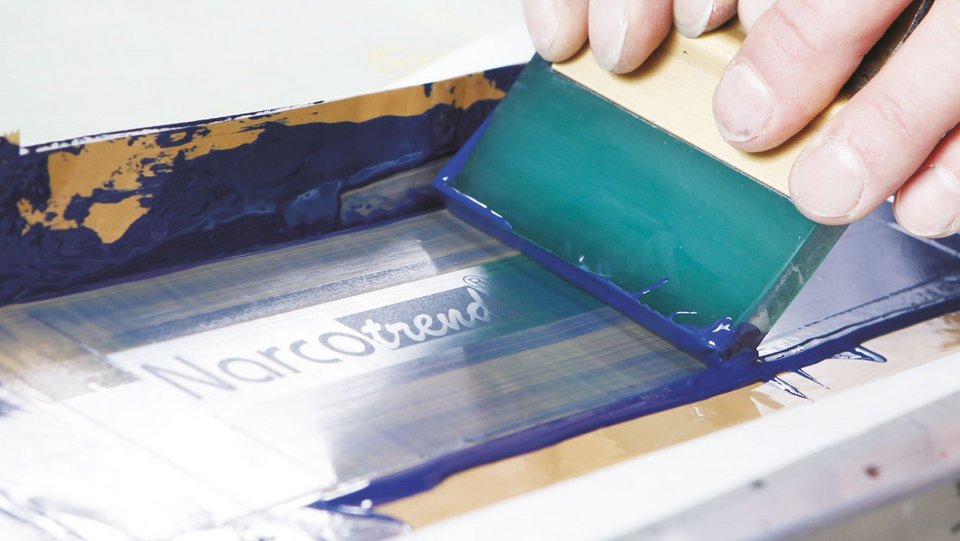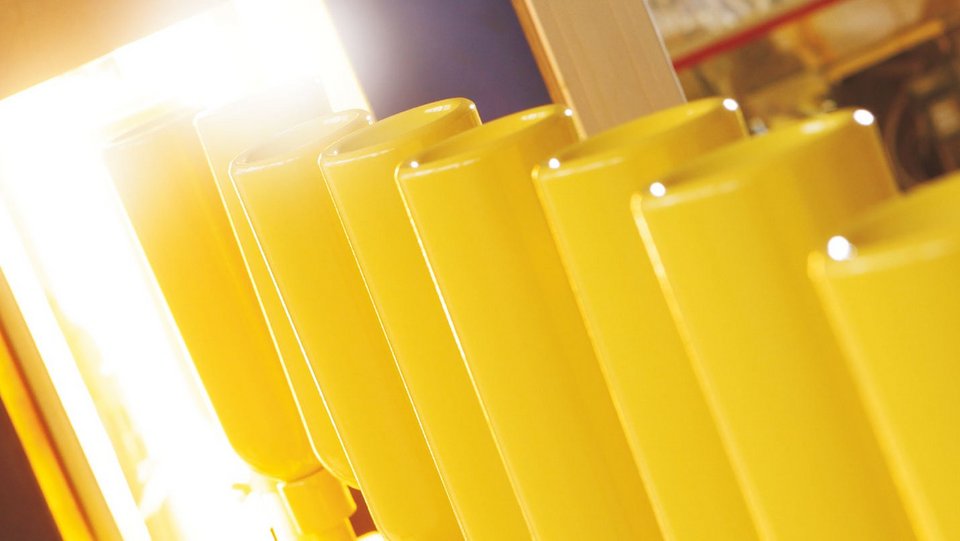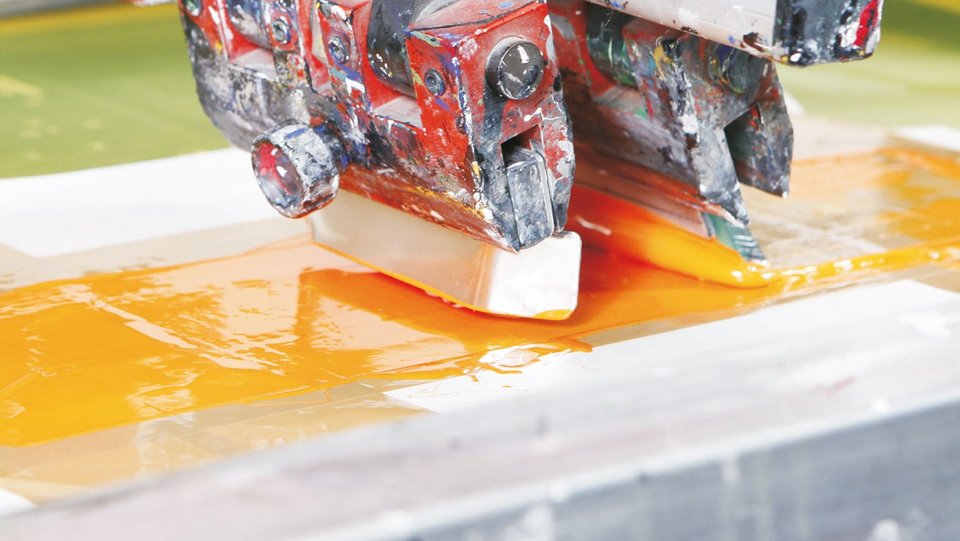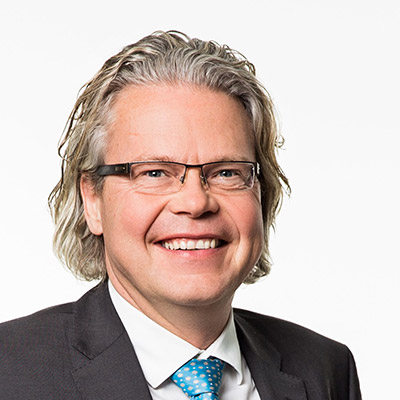Galvanic-coating
The classical chrome-plating in the layer system of copper, nickel and chrome not only offers a timeless decorative aspect but also high resistance against wear and corrosion. Appropriate mechanical pretreatments (grinding, polishing, glass bead blasting) produce mirror-bright but matt finishings with different gloss levels and structures.
Tin surfaces are proving themselves in electrical engineering and electronics, especially because of good conductivity and solderability.
Surfaces with precious metal coatings of gold and platinum obviously are high-quality surfaces. They are highly resistant to tarnishings and chemical attacks. In addition to purely technical application, they are also famous in prestigious areas. Precious metal coatings are used for matt, textured or high-gloss surfaces.
- The silver-coating is applied as a decorative and functional decorative layer. Silver-plated surfaces have a much better reflection than chrome-plated ones.
- The gold-coating produces decorative layers of high purity of gold (24 kt), about 0,1 to a maximum of 5 µm thick.
- The platinum-coating adds hardness and wear resistance to the extraordinary properties of precious metals.
For black oxide finishings a dense, black and shiny adhesive layer of iron oxide is produced. This is done by immersion into sodium hydroxide solvent of approx. 140 degrees Celsius and oxidizing agents. By the following immersion in oil the deep black gloss of the metal surface is emphasized and a good protection from corrosion is achieved.
Black chrome fulfills the highest requirements for low-wear, decorative and deep black surfaces. Low reflection and maximum absorption properties make black chrome particularly interesting e. g. for optical, photographic, laser and solar technology. It can produce similar structures as chrome-plating delivering all sorts of surfaces: matt finished, polished, with smoothing marks, or high gloss finish.
Zinc-plating as a low cost method with an attractive decorative effect provides corrosion protection for all steel parts. To increase corrosion protection and to achieve a better metal surface result the material is plated after galvanizing (blue, colorless, yellow or black). Trends point towards RoHS compliant chromium-free chromate coatings, which are already implemented today in the field of blue chromate.
During phosphatizing a layer of phosphate forms on the metal surface. It consists of a fine, crystalline salt layer of metal phosphates and firmly connects with the metal. A phosphate layer can be used as pretreatment for subsequent coating, e. g. powder coating. By immersion in oil or fat the corrosion protection is greatly improved, and the phosphated steel parts also have good sliding properties.
Coating powder is electrostatically charged and sprayed onto the workpieces, where it is deposited and adheres. In a baking oven, the powder coating is then baked at temperatures of about 200 degrees Celsius and merges to a uniform film. The advantages of this environmentally friendly technology are:
- individual RAL or special colors
- high corrosion protection, even at very high temperatures
- very good mechanical properties (impact resistant)
For this procedure a workpiece is dipped into the paint. For electrophoretic coating a paint solution and suitable film formers create an electric field of 50 to 300 V and the workpiece is used as grounding. Electrophoretic coating has been developed by Ford as an anodic coating to produce a protective coating for cars. Today it is applied throughout the automotive industry as cathodic dip painting.
The pad printing process, which works on the principle of indirect gravure printing, has become one of the most important procedures in imprinting items. The surface of the printing plate bears the recessed image that is to be printed. A squeegee presses the ink into the deeper placed print image and cleans up the remaining surface of the printing plate.
After that an elastic printing pad moves over the plate and takes on remaining paint in a lifting movement, to then transfer it onto the item, thus indirectly print it.
Due to its flexibility, the printing pad assumes the shape of the object to be printed and therefore can transfer the motif to the print substrate perfectly. Unlike screen printing it is possible in pad printing to print even convex and concave surfaces (single- or multi-colored).
The most common application type in the paint industry is spraying. For spraying pressure atomizers are used, which apply the liquid by a compressor at low pressure (0.5 to 1 bar), high pressure (4 to 8 bar) or by an airless spray gun (60 to 350 bar).
The screen printing process, which works on the principle of the stencil printing, alongside pressure pad printing has become one of the primary methods in printing. The printing plate is a stretched fabric on a sturdy aluminum frame. This fabric bears a template with impermeable and permeable parts where color is applied according to the print pattern. The paint coating in screen printing is 5 to 10 times thicker than in other printing processes. Therefore, it is particularly suitable for high-quality parts.
The paint is put onto the stencil with a floodbar to fill the color permeable areas with color. Then the printing plate is positioned above the workpiece without allowing any direct contact between printing screen and plastic item (descent, printing form distance). The paint is pushed through the fabric by pulling the floodbar. The printing screen gets in touch with the plastic item only at the edge of the floodbar. The color separates from the printing plate and remains on the printed part.
Mechanical surface treatment
This method can level uneven metal surfaces and deburr sharp edges. In addition, it can create shiny surfaces ranging from semi-gloss to chrome like.
For shot peening small abrasive particles are hurled at high speed against the surface to be treated, either by centrifugal wheel, compressed air, or jet injector systems. The abrasive impact is accelerated and brought onto the surface by high speed and high air pressure (up to 10 bar, typically 2 to 5 bar). This leads to a hardening and an elastic-plastic deformation in the surface resulting in residual compressive stress of the workpiece.
In shot peening the aspect of residual compressive stress to increase the fatigue strength of the material is most important. Increased corrosion resistance and surface area make shot peening a widespread method and are essential e. g. in bonding components.
A major drawback of this method is a weakening of the component caused by mishandling (e. g. too much pressure, too little distance to the blasting medium). A shorter and/or reduced fatigue strength and bending strength of the workpiece are possible consequences.
Hardening
Hardening steel means increasing its mechanical resistance by selective modification and conversion of its microstructure. The treatment is conducted by heating and subsequent rapid cooling. If metal is plastically deformed, dislocations spread out within the workpiece. In order to increase strength, measures must be taken to impede the movement of dislocations.
The most important hardening process is the transformation hardening. The workpiece is heated to an extent that α-iron (ferrite) is transformed into γ-iron (austenite) at room temperature. In austenite much more carbon can be solved than in ferrite. By dissolving the existing cementite (Fe3C) its carbon dissolves in austenite. If the carbon-rich austenite is quenched, there won’t be a segregation in ferrite and cementite because of kinetic inhibition (diffusion takes time). The iron lattice can’t transform into the body-centered cubic α-iron because of the „trapped“ carbon atoms. It is shearing instead into a distorted tetragonal body-centered cubic lattice (martensite) to which it is braced by the carbon.
For this kind of hardening the cooling rate is most important. The larger the supercooling (temperature difference), the more martensite is formed. The conversion speed is controlled by different cooling media (water, oil or air). The chemical composition of the steel is also important. Because of its high diffusion rate carbon contributes best to the hardening capacity. However, the substitutional alloying elements, such as chromium, determine the hardenability of the material. With small parts/large quenching rates a hardenability covering the entire cross section of the workpiece is achieved. To be hardened steel must contain at least 0.2 % carbon.
The third mechanism is strain hardening which arises during cold forming. By increasing the dislocation density in the structure the sliding processes are hindered. This increases strength and is therefore called strain hardening. Strain hardening is particularly used for non-ferrous metal alloys (e. g. bronze) and solid solution alloys.
Heat treatment is a combination of hardening and tempering steel in order to make it strong and tough. The hardening is carried out by rapid cooling from the austenite. The material should be heated at least 4 degrees Celsius per minute. The temperatures for hardening are above the temperature of the complete dissolution of ferrite: for hypoeutectoid materials 30 to 50 degrees Celsius above the transition line Ac3, for hypereutectoid materials above the Ac1 transformation point (about 750 to 900 degrees Celsius). The holding time at the hardening temperature is about 20 + (workpiece thickness D (mm)/2) minutes. The following quenching process usually produces a martensitic structure, in some materials, it is also bainite or a mixture of martensite and bainite. These structures achieve the highest possible hardness for the respective kind of steel. Depending on the material either water, oil, salt bath or air are suitable for quenching. In general, steels with low carbon and low alloy content are cooled more abruptly than those with more carbon and a higher content of alloying elements.
Depending on the steel and end use the tempering process starts at temperatures between 150 and 700 degrees Celsius. Depending on the required mechanical properties of the workpieces they are held at that temperature for varying periods of time and they are generally air quenched. As a rule of thumb for tempering: For hardening twice the holding period as the holding period of the material on the austenitizing temperature.
For isothermal heat treatments both operations are summarized: The workpieces are brought directly from the hardening temperature to the tempering bath, left there a certain period of time and are then quenched definitely.
With induction hardening mainly complicated shaped parts can be hardened partially before quenching. Possibly, quenching isn’t even necessary if the heat can drain fast enough into the rest of the still cool workpiece. Mainly tempered steels reach values that come close to conventional curing. In terms of accuracy, controllability and availability, it is surpassed only by the laser beam hardening. Induction hardening is primarily used in tool making. With pliers for example, only the cutting edges are induction hardened, as they require a higher hardness than the complete tool.
There is also the precipitation by the temperature-dependent solubility of the iron lattice for certain foreign atoms. They are precipitated during quenching and brace the crystal lattice, such as cementite.
Carburizing is a process of steel heat treatment. The carbon content of steel is low which is why they are difficult to harden. Carburizing therefore is meant to enrich them with carbon and thus make hardening possible. Usually only the surface layer is enriched with carbon to gain more martensite here than in the core and to achieve a hard surface layer. The core mostly is to remain viscous and soft.
Tempering is a heat treatment process, in which a material is heated selectively to affect its properties, particularly, to reduce tension. Large-scale tempering is found in machining steel, aluminium and other non-ferrous metals or alloys as well as in glass production.
Nitriding is a process for surface hardening. Nitrogen is used. The result is a surface layer that is resistant to about 500 degrees Celsius. Possible methods: baking nitriding, gas nitriding, plasma nitriding.
The manufacturing process is generally carried out at temperatures from 500 to 520 degrees Celsius for treatment times from 1 to 100 hours. The core of the material remains ferritic, the formation of austenite near to the surface is avoided by diffusing nitrogen into the core. An extremely hard superficial compound layer (ε- and γ-iron nitrides) forms and – depending on the treatment period – can become 10 to 30 µm thick, with more or less strongly formed pores which in turn can be used e. g. as carrier for lubricants. Nitriding without compound layer formation, for instance, is possible for later chemical or galvanic coating. Under the compound layer there is a diffusion zone in which nitrogen is stored at a certain depth of the ferritic metal matrix. This nitrogen which is stored in solid solution leads to an increase in the endurance limit. The so-called nitriding depth is defined by the limit hardness. The limit hardness is 50 HV higher than the core hardness of the workpiece. A particularly high hardness in the diffusion zone can be reached with so-called nitriding steels.
It is possible to oxidate the compound layer to increase the protection against corrosion. This generally happens through steam which corrodes the iron content and forms an oxidic protection layer.
There are three main methods: Gas nitriding, liquid or salt bath nitriding and plasma nitriding. In salt bath nitriding it is possible to nitrate fractionally as the workpieces can be dipped partially. In plasma nitriding it can be covered mechanically by a clamping device, for example.
Engraving
Laser engraving means labeling or marking objects with the help of an intense laser beam. For this purpose the labeled material itself is changed. The procedure and the use of energy depend on the material. Laser engravings are waterproof, washable and very durable. They can be created quickly, automatically and individually, which is why the procedure is used for numbering individual parts. The engraving of very small signs, such as QR codes or data matrix, directly on the workpiece are possible, too.
Stylus engravings are incisions of ornaments, letters and decorations in metal, glass, stone and other solid materials. The classical machine engraving on metal surfaces or on glass is done with the stylus as a tool. By removing material a surface is created, that stands out against the background. The patterns cut out by the stylus can be colored and thus be optically highlighted.
A special procedure is the electric engraving. A swinging stick is producing sparks at short intervals which change the surface material by melting and evaporation. Appropriate tools generate the vibrations by an alternating magnetic field in the armature of an electromagnet. At the same time they provide the necessary current flow causing a material change on the metal surface which is to be engraved with every touch. This procedure is similar to the erosion process, however, mostly performed by hand and without intervening liquid. Among others, applications are the engraving of serial and batch numbers on machine parts.
